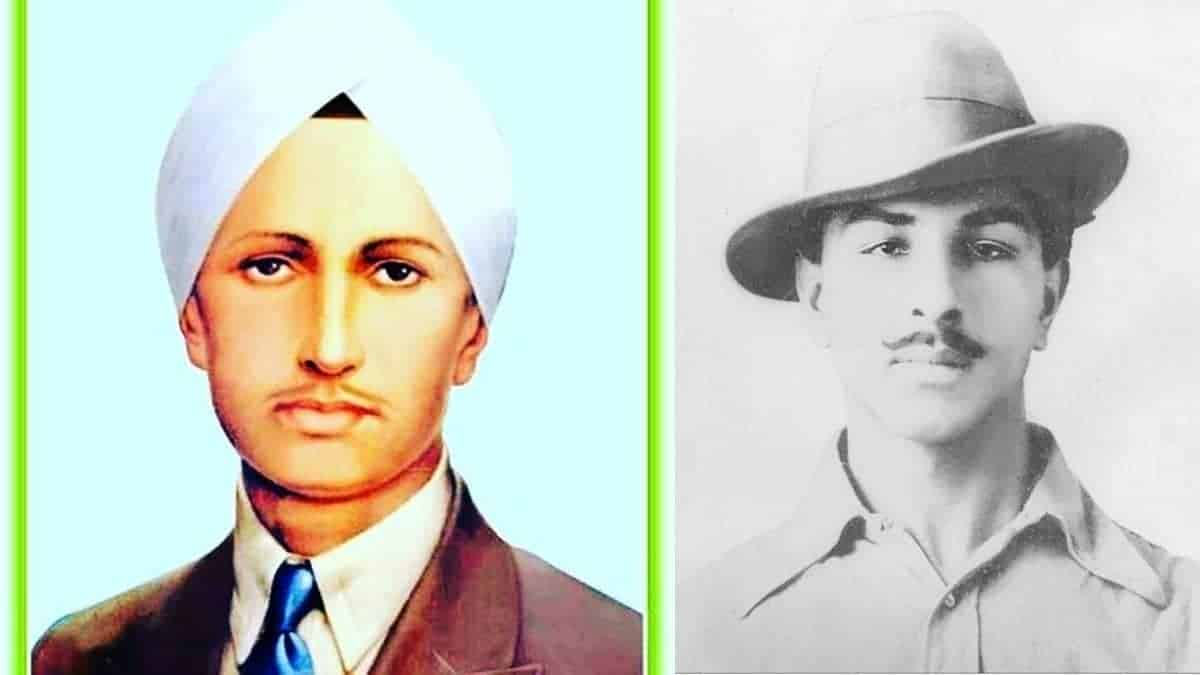Who was Kartar Singh Sarabha that became the inspiration of Bhagat Singh?

There is a story from pre-independence India about a young Punjabi rebel who was waiting for his turn to be hanged. Kartar Singh Sarabha, a 19-year-old revolutionary, was one of the 27 revolutionaries sentenced for their claimed roles in the Lahore Controversy. His granddad visited him in jail in Lahore. “We are not even confident, Kartar Singh, that your death will benefit the country,” he remarked. “What are you doing with your life?” Kartar Singh responded by reminding his grandfather of relatives who had died of Cholera, plague, or other ailments. “Would you prefer your grandson died of a disease instead?” Isn’t this dying a million times better than that?” He interrogated the elderly guy, rendering him speechless.
Kartar Singh, an inspiration to countless revolutionary and other freedom fighters, including Bhagat Singh, who referred to him as his “Guru,” had declined to have any legal representation during the case’s trial. He was dubbed “the most dangerous of all rebels” by the judge, who added that because he is very proud of his misdeeds, he does not deserve leniency and should be executed. Kartar Singh Sarabha marched to the gallows on November 16, 1915, with a grin on his lips and a glint in his eyes, singing patriotic songs he had penned.
Kartar Singh’s love for his motherland began early in his life. Kartar Singh was born on May 24, 1896, into a Jat Sikh household in the Sarabha area of Ludhiana to Sahib Kaur and Mangal Singh. He was their only child. His father died while he was young, and he was raised by his grandfather. He completed his primary education in his village school and graduated from Mission High School. His grandfather sent him to the University of California in Berkeley to study Chemistry when he turned 16.
When he arrived in San Francisco, an incident at immigration changed his life forever. He observed that Indians were subjected to humiliating questioning, while immigrants from other areas and nations were let in after completing the bare minimum of paperwork. This was because “Indians are slaves” and so second-class citizens, he was told.
This infuriated the young, proud Jat Sikh, who began to doubt the existence of British control in India. His involvement with the Nalanda group of Indian students at Berkeley sparked patriotic feelings in him, and he was frequently angered by the treatment of Indian immigrants in the United States, particularly manual workers. Kartar Singh, who supported himself by working as a fruit picker, found that Indian farm labour was frequently treated shabbily and discriminated against in terms of wages.
Kartar Singh became a significant member of the Gadar movement when it was founded in 1913. On April 21, 1913, Indians in Oregon created the Gadar Party with the goal of driving the British out of India, risking everything they had. Kartar Singh was assigned the task of producing the party mouthpiece Gadar in the Pubjabi language. Gadar was translated into Hindi, Urdu, Bengali, Gujarati, and Pushto and distributed to Indians all over the world. The periodical exposed British crimes and fueled revolutionary ideals among Indians living abroad.
When World War I broke out, the Gadarites felt it was time to return to their homeland and mobilise their people. As the British focused on defending themselves in the international war, the August 5, 1914 issue of Gadar published a declaration of war against the British, which was widely circulated among Indians around the world, particularly among Indian soldiers in British cantonments.
Kartar Singh travelled to India with Satyen Sen and Vishnu Ganesh Pingle on September 15 and visited Jatin Mukherjee of Yugantar in Kolkata. Rash Behari Bose was linked to him by Mukherjee. In Benaras, Kartar Singh met with Bose and briefed him of the arrival of up to 20,000 additional Gadarites as well as the revolution’s plans.
Regrettably, the British learned of the revolutionaries’ preparations and mounted a major campaign to catch them. At the Ports, several Gadarites were apprehended. This did not deter Kartar Singh from planning forward and laying the groundwork for the Punjab revolution. He concentrated on enlisting Indian soldiers in the British Army, particularly in the cantonments of Meerut, Agra, Benares, Allahabad, Ambala, Lahore, and Rawalpindi, while also establishing a small arms production business in Ludhiana.
With the help of senior leaders, including Bose, the date for the insurrection was determined for February 21, 1915, and a strategy was devised to attack the cantonments of Mian Mir and Ferozepur, while Ambala was braced for a mutiny. A traitor let them in a day before the revolt here as well, and numerous revolutionaries were imprisoned. Kartar Singh, on the other hand, managed to avoid the British. Refusing to give up, he made a last-ditch, desperate attempt on March 2, 1915, at Chak No. 5 in Sargodha to stir the Indian soldiers of the 22 Cavalry and inspire them to mutiny. This time, he was apprehended by Rissaldar Ganda Singh of the 22 Cavalry.
He was put on trial in Lahore with the other Gadarites in what became known as the Lahore Conspiracy case. The verdict was handed out in September 1915. Following the intervention of Lord Hardinge, the Governor General of India, the sentence of 17 Gadarites was altered from execution to incarceration and deportation for life in the Andaman Cellular jail, following a significant public uproar.
He quickly became a martyr’s emblem, and his bravery and sacrifice influenced many people. Nanak Singh, a Punjabi novelist, based his life on his novel “Ikk Miyan Do Talwaran.” India will always remember Shaheed Kartar Singh Sarabha, its national hero.

